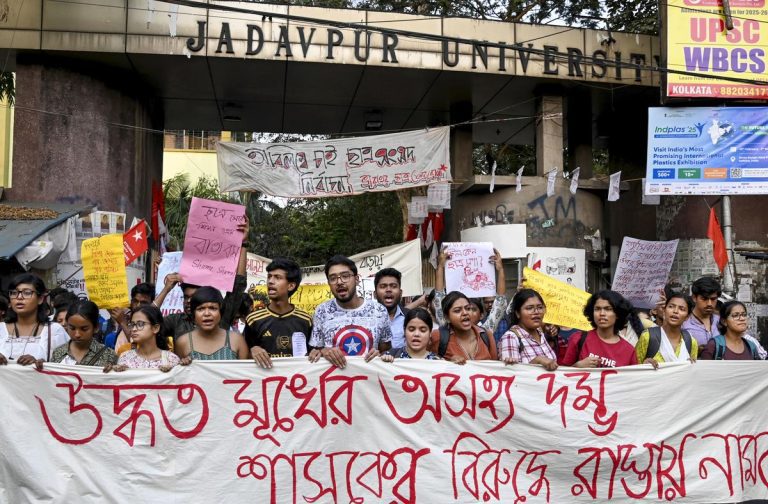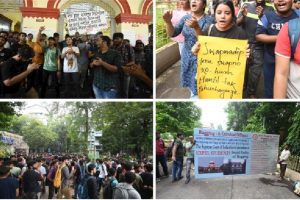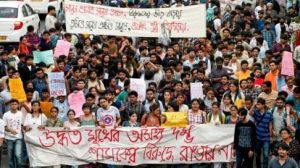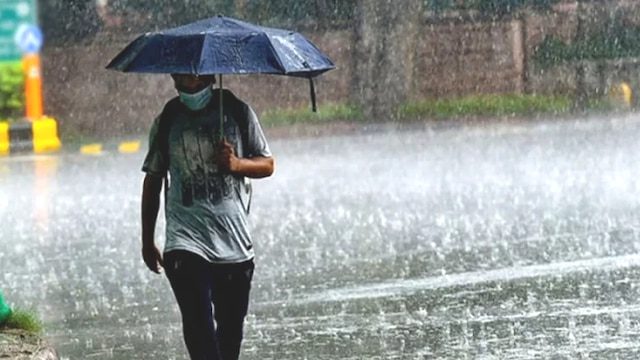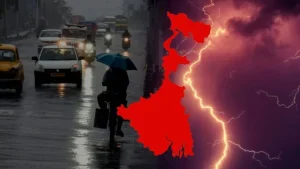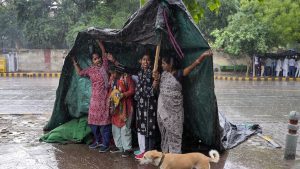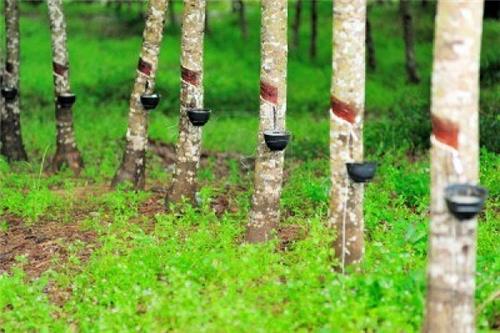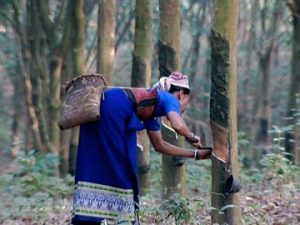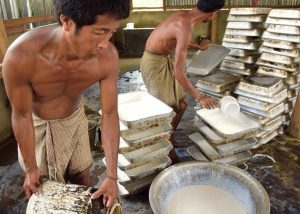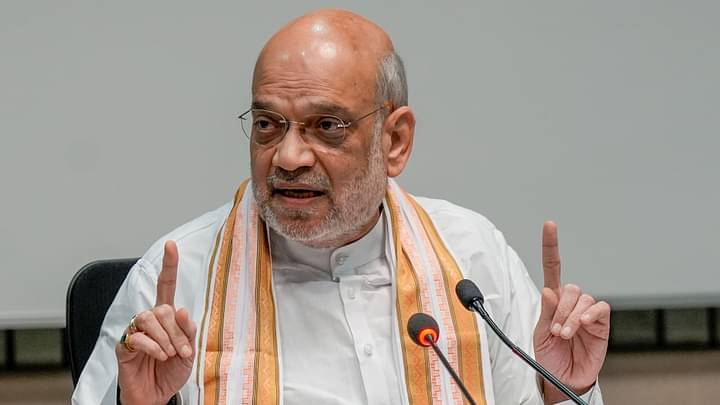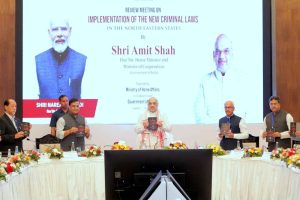Northeast India, a region known for its vibrant culture, breathtaking landscapes, and strategic significance, has often faced challenges related to infrastructure, trade, and security. For decades, the region’s economic potential remained largely untapped due to inadequate connectivity. However, two transformative projects—the Trans-Arunachal Highway and the Dhubri-Phulbari Bridge—are set to change this landscape dramatically. These two economic corridors will not only enhance trade and commerce but also bolster national security and improve accessibility for millions of people.
With improved infrastructure, Northeast India is poised to become a key player in India’s Act East Policy, strengthening trade ties with Southeast Asian countries. The North Eastern Council (NEC) has been actively involved in accelerating development projects, ensuring sustainable economic growth in the region. Let’s take a deep dive into how these projects will reshape the region’s future.

Trans-Arunachal Highway: Unlocking Economic and Strategic Potential
The Trans-Arunachal Highway (TAH) is one of the most ambitious road infrastructure projects in India, covering over 2,400 kilometers across 16 districts of Arunachal Pradesh. It connects Tawang in the northwest to Kanubari in the southeast, bringing isolated communities into the mainstream. This highway is expected to enhance regional trade, improve military logistics, and promote tourism. This highway, part of the Special Accelerated Road Development Programme for the North Eastern Region (SARDP-NE) (Ministry of Road Transport & Highways), will integrate remote districts with national highways, improving access to markets, healthcare, and educat0ion.
Strategic Significance for National Security
Northeast India shares international borders with China, Myanmar, and Bhutan, making road connectivity crucial for India’s defense preparedness. The TAH plays a pivotal role in ensuring quick military mobilization along the Indo-China border and aligns with the broader goal of infrastructure-led defense preparedness (Ministry of Defence).
- The highway enables faster movement of troops and equipment to sensitive border areas.
- Improved roads act as a deterrent against potential external threats, strengthening India’s border security.
- Military supply chains will become more efficient and resilient with this enhanced road network.
Given the rising geopolitical tensions in the region, the TAH provides India with a strategic advantage, allowing defense forces to respond swiftly to any challenges along the Line of Actual Control (LAC).
Economic Growth and Connectivity
For decades, the economic development of Arunachal Pradesh was hindered by poor road infrastructure. The TAH will change that by:
- Boosting local industries such as agriculture, handicrafts, and tourism.
- Attracting investments in key sectors like horticulture and forestry.
- Reducing travel time, making it easier for farmers and traders to transport goods to markets.
- Improved road connectivity will also lead to an increase in tourism, particularly in destinations like Tawang, Ziro, and Bomdila, which are known for their scenic beauty and cultural significance.
Arunachal Pradesh, rich in natural resources, will witness an economic surge as businesses gain better access to regional and national markets. Additionally, ADB (Asian Development Bank) has actively funded connectivity projects in Northeast India, further supporting this initiative.
Transforming Lives in Remote Areas
Before the construction of the TAH, many remote villages in Arunachal Pradesh were cut off from basic healthcare, education, and economic opportunities. The new highway is expected to:
- Provide better access to healthcare facilities, reducing emergency response time.
- Improve educational opportunities, allowing students to travel easily to schools and colleges.
- Enable greater social integration, connecting tribal communities with mainstream markets and services.
By bridging the gap between urban centers and remote villages, the TAH is set to transform the socio-economic landscape of the state.
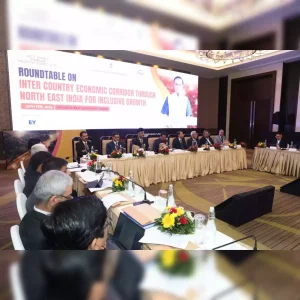

Dhubri-Phulbari Bridge: A Game-Changer for Northeast Connectivity
The Dhubri-Phulbari Bridge, spanning 19.3 kilometers over the Brahmaputra River, is set to be India’s longest river bridge upon completion. This engineering marvel project, funded under the Bharatmala Pariyojana (Ministry of Road Transport & Highways), will connect Dhubri in Assam to Phulbari in Meghalaya, significantly reducing travel time and boosting trade in the region.
Reducing Travel Distance and Time
Currently, travelers between Dhubri and Phulbari must take a 200-kilometer detour via the Naranarayana Bridge, which adds several hours to their journey. Once completed, the Dhubri-Phulbari Bridge will:
- Cut travel distance from 200 km to just 19.3 km.
- Reduce travel time from 5 hours to 30 minutes.
- Provide a direct link between Assam and Meghalaya, making daily commuting easier.
This improved accessibility will enhance trade and mobility between the two states, benefiting thousands of farmers, traders, and businesses.
Enhancing Trade and Commerce
Assam and Meghalaya rely heavily on agriculture, with a large portion of the population engaged in farming and local trade. The bridge will:
- Enable faster transportation of agricultural produce like tea, betel nuts, and pineapples to broader markets.
- Reduce logistics costs for businesses, making exports more competitive.
- Open up new trade opportunities with neighboring Bangladesh, boosting cross-border commerce.
The bridge will significantly boost commerce between Northeast India and Bangladesh. The enhanced connectivity aligns with the India-Bangladesh Protocol on Inland Water Transit and Trade (Ministry of External Affairs), facilitating smoother cross-border movement of goods. This will also strengthen Northeast India’s role as a gateway to Southeast Asia under the Act East Policy. As Northeast India strengthens its trade links with South Asia, this bridge will serve as a vital economic corridor.
Strategic Importance in National Security
The Dhubri-Phulbari Bridge is located near the Bangladesh border, making it a crucial asset for national security. The bridge will:
- Facilitate quick mobilization of defense forces along the international border.
- Improve border surveillance and strengthen anti-smuggling operations.
- Enhance disaster response capabilities, especially during floods.
The strategic location of this bridge makes it not just an economic asset but also a crucial component of India’s security framework.
Maitri Setu: Strengthening Indo-Bangladesh Connectivity
In addition to these two corridors, another critical infrastructure project—the Maitri Setu—has been developed to boost trade between India and Bangladesh.
Trade and Economic Integration with Bangladesh
The 1.9-kilometer Maitri Setu connects Sabroom in Tripura to Ramgarh in Bangladesh, providing the fastest land route to the Chittagong Port. This project will:
- Reduce logistics costs for northeastern states exporting goods via Bangladesh.
- Increase cross-border trade, benefiting industries in both India and Bangladesh.
- Strengthen India’s Act East Policy, promoting better economic ties with Southeast Asian nations.
By improving access to global markets, the Maitri Setu ensures that Northeast India becomes a hub for international trade.


Challenges and the Road Ahead
While these projects promise tremendous economic and strategic benefits, they also come with challenges:
- Difficult Terrain: Constructing roads and bridges in hilly and flood-prone areas requires advanced engineering solutions.
- Environmental Concerns: Infrastructure development must balance economic growth with sustainability, ensuring minimal ecological impact.
- Timely Execution: Delays in construction due to logistical hurdles must be addressed to ensure timely completion.
By overcoming these challenges, Northeast India can fully harness the potential of these transformative projects.
A New Era of Growth for Northeast India
The Trans-Arunachal Highway and the Dhubri-Phulbari Bridge are more than just infrastructure projects—they represent a new era of growth, security, and connectivity for Northeast India.
– The TAH strengthens national security, enhances tourism, and connects remote areas to economic hubs.
- The Dhubri-Phulbari Bridge improves trade, reduces travel time, and creates new economic opportunities.
- The Maitri Setu integrates Northeast India into global trade networks, boosting exports and commerce.
These projects collectively transform Northeast India into a strategic and economic powerhouse, reinforcing India’s commitment to regional development. As construction progresses, the region stands on the brink of unprecedented prosperity, making these corridors a blueprint for the future.
By enhancing connectivity, trade, and security, these economic corridors ensure that Northeast India plays a crucial role in India’s economic and geopolitical landscape.
For more updates on Northeast India’s development, check out:


